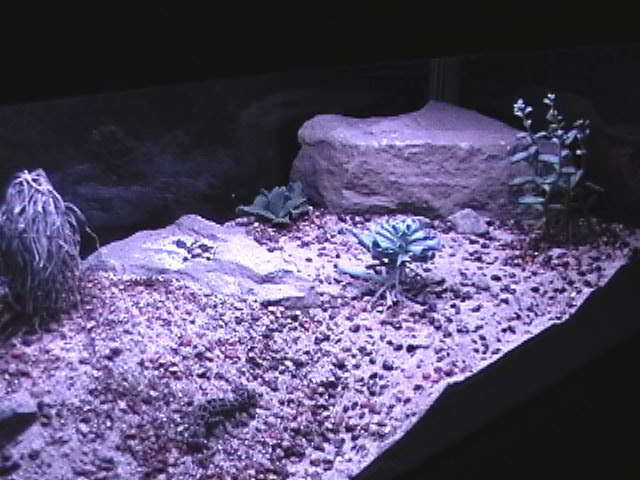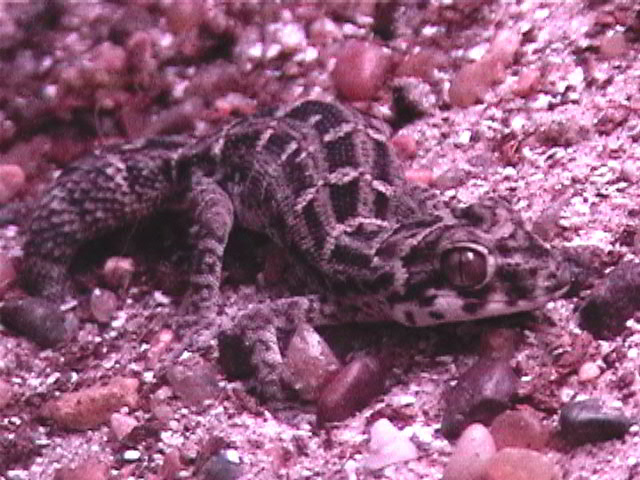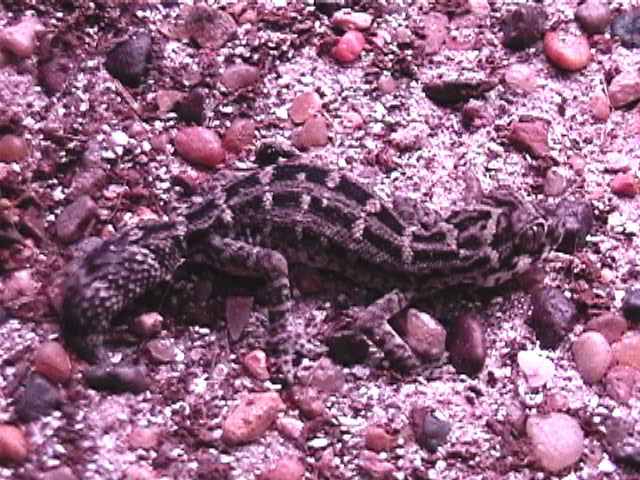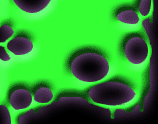|

This is a twenty gallon long using flagstone, washed beach sand, coir and 1/4" gravel, the mix is something that I wish I would have done in parts, but instead just mixed as I went, I really love the look of it, as you can see in another picture it is really conducive to the pattern and color of the carrot tail viper geckos. The terrarium itself is constructed through one of Phillipe Vosjoli's *sp* methods found in his book "Desert Vivarium" it is kind of a reverse false bottom with the egg crating being laid down first then screen is layed on top, pvc piping is used as the potting devices so you can water just the plants instead of the whole terrarium, the plants used were all succulents, unfortunately I do not know their scientific names, if anyone out there does please email me so that I can list them. the small succulent in the back right hand corner is some type of agave, the one in the front right looks to be a type of sedum. The one on the left died shortly after planting, so I don't know that it really matters that the name be listed. the potting mix in the pvc pipes is a light airy mixture containg coir, washed beach sand, crushed coral aragonite, and crushed cuttle bone, the last two being added for their calcium benefits.
Originally compact flourscent lighting fixture was used above the terrarium, which gave the setup a much better overall look, and I really feel was better for these high light plants, unfortunately I soon moved it to a new saltwater tank, and substituted a 24" double striplight, the sedum seems to have suffered (notice it's "lankiness"), I will get a compact flourescent back on here as soon as possible! 
This is one of my female CTVG. This picture clearly shows why I like the mix used for the terrarium, she blends in quite well, hopefully somewhat like in nature. 
|

